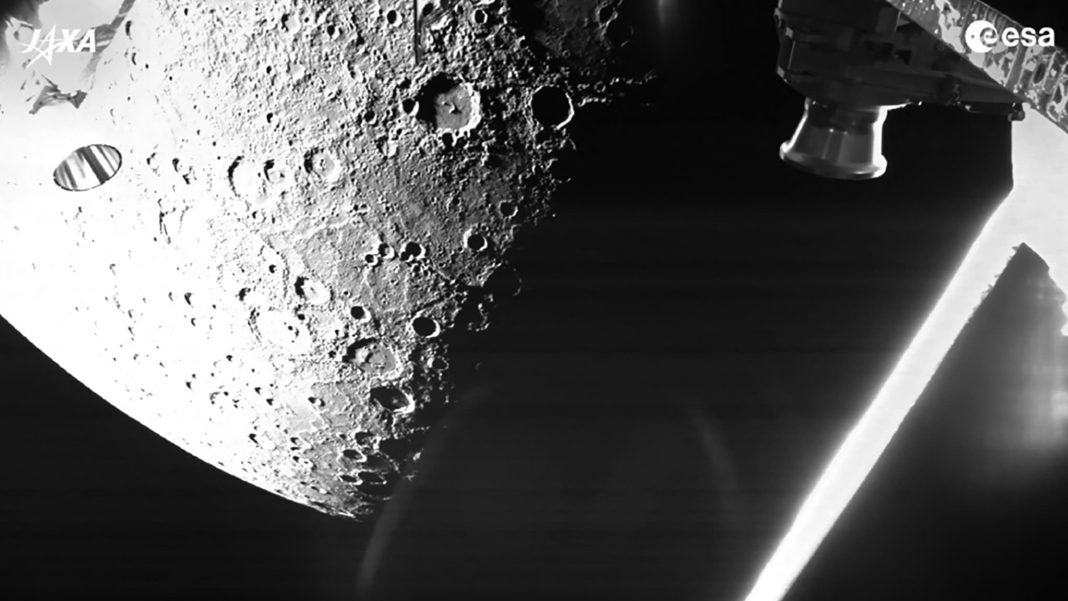This is the first time since its launch in 2018 that this satellite, which carries sensors from the European Space Agency (ESA) and Japan (JAXA), has made a flyby of its “target” planet.
Unique pictures. The BepiColombo satellite dedicated to the exploration of Mercury took its first pictures of the planet closest to the sun, which the instrument flew at an altitude of about 200 km, the European Space Agency announced on Saturday.
This is the first time since its launch in 2018 that this satellite, which carries sensors from the European Space Agency (ESA) and Japan (JAXA), has made a flyby of its “target” planet.
BepiColombo is scheduled to orbit Mercury only in 2025, because it is very difficult to reach the smallest planets in the solar system.
Photo was taken about 1000 km away
In flight, the surveillance cameras provided black and white footage. But after the machine reached the night side of the planet, conditions were not “ideal” for taking pictures directly to the nearest point (199 km), and only the closest could be captured. At a distance of about 1,000 km, the European Space Agency said in a statement.
In these images, we can identify large surface impact craters, which were formed as a result of massive lava eruptions billions of years ago. “It’s incredible to finally see our target planet,” said Elsa Montagnion, the mission’s chief of spacecraft operations.
The BepiColombo mission must study the formation of Mercury in order to solve the mystery of the formation of this scorched planet, the least explored of the four rocky planets in the Solar System.
Five more flights planned
Five more flights over Mercury are planned ahead of the mission’s final destination, during a complex path that will also see the satellite fly over Venus and Earth.
BepiColombo can’t be sent directly to Mercury: The Sun’s gravity is so strong that it would be necessary to perform a giant braking maneuver to succeed in positioning the satellite, which would require loading so much fuel for a spacecraft of this size.
The gravity exerted by Earth and Venus – called gravitational assist – allows them to decelerate “naturally” during their journey.

“Wannabe internet buff. Future teen idol. Hardcore zombie guru. Gamer. Avid creator. Entrepreneur. Bacon ninja.”





